Blog
Real 100 Leaders: Recognizing The Country’s Most Impactful Brands for 2019
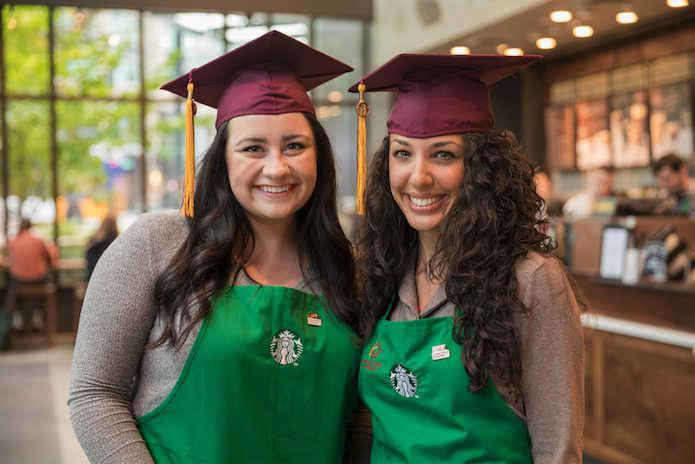
This is the eleventh post in a series on social changemakers. Each interview was conducted around the Los Angeles Social Innovation Summit. At the Summit, business leaders, philanthropists, entrepreneurs, and purpose-driven individuals gather to discuss corporate-fueled social impact. For this article I spoke with John Kelly, Starbucks’ Executive Vice President of Global Public Affairs and Social Impact.
Simon Mainwaring: Starbucks has addressed multiple social issues over the last decade. What are you most excited about now that could inspire others to think more progressively?
John Kelly: Well, there’s the current body of work that we’re always trying to bring to scale. We’re organized around creating opportunities through our hiring initiatives and equity programs. We’re expanding our sustainability initiatives and strengthening our community that includes 30,000 stores with 380,000 partners (employees) around the world. So we’re focusing on having the biggest possible impact on the things that are most relevant to our partners. Things that are most authentic to our brand and most impactful to our community. We’re out to demonstrate that you can pursue both profit and doing good.
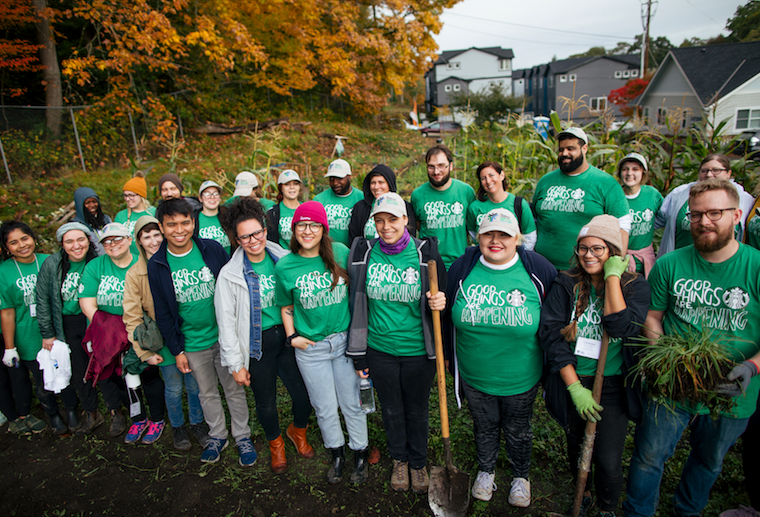
SM: What are you doing to solve global issues at scale more effectively by mobilizing your global infrastructure?
JK: Plastics is a good example of a global, industry-wide problem of which we’re a small player but that is significant for us. We have 100 million people coming through our doors. So we announced last year we were going to eliminate plastic straws. That’s just the beginning. We’re working with WWF and others to try to reinvent different materials. We’re working to reduce our plastic footprint, reducing waste that could end up in the ocean or landfills. One of our big initiatives with Closed Loop Partners and others is the NextGen Cup Challenge aimed at creating a more compostable, recyclable hot cup. Our customers and partners expect us to do more, particularly around sustainability.
SM: What would you say to brands who want to step out to the cutting edge of change?
JK: It depends on their values and mission. We chose, 30-some years ago, to nurture the human spirit; one cup, one person, one neighborhood at a time. That’s as much about humanity as it is about anything else. That allows you to take more risks and to take more action in other areas than a lot of CPG companies who are simply trying to make a profit. It’s not our place to judge others. What I would tell them is that it’s an old school way of thinking to think it’s a trade-off. We’re demonstrating that you can bring impact to scale, you can take the time to invest and innovate and partner with others the way we have with Closed Loop Partners, Conservation International and WWF. We’re willing to do that and open source these solutions. Everything we’re pursuing on sustainability is open source. We share them with everybody because the more people adopt these solutions, the better it becomes economically.
This is what we’ve been trying to demonstrate with Closed Loop Partners and the NextGen Cup Consortium. It’s McDonald’s, it’s Coca-Cola. These are competitors but very, very different companies. It gives them a platform through this partnership. We’ve been trying to say, “The water is warm. Come in. You can splash around a little bit, benefit from some crowd sourcing and share the results with everybody.”
Another example is the partnership with ASU for the Starbucks College Achievement Plan. A few years ago we aspired to have 25,000 baristas graduate with a four-year college degree by 2025, choosing from 80 different majors offered by ASU online – with 100% tuition coverage.. Here’s the catch: there’s no catch. They can leave the day they graduate from ASU. So now we have more than 13,000 participants. We’ve already graduated almost 3,000.. Nearly 50 percent of them are still at Starbucks because they love the company.
By creating that different kind of benefit, I would argue it’s providing us with a great attraction and retention tool.. That is culture. We’re getting a better educated workforce and it’s working for us. It’s an enormous investment and enormous risk. Nobody quite knew how well it would work. We’re now seeing it creates momentum. Twenty percent of people who apply to Starbucks say SCAP is a driving factor.. So, at the end of the day, a willingness to be open and to take some risks.

Starbucks-impact
SM: How would you advise other companies to throttle between the instinct to get credit for their impact work and embracing a collaborative mindset?
JK: That’s reasonable and something we wrestle with. We have people who say we don’t get enough credit for the things we do. At the same time, we don’t market these things. We don’t advertise what we do. My experience is that there is more danger in seeking credit. It’s not just greenwashing. It’s when people think you’re doing it for the wrong reasons. These days, there’s so much transparency.
SM: Exactly, what danger is there in seeking too much credit?
JK: If you’re not authentic, relevant and tangible, you won’t get away with getting credit for something. There are too many people who follow any issue passionately, starting with our own baristas. We have 12,000 self-selected greener aprons. People who have taken courses, who share information on sustainability, who hold us accountable, who want us and challenge us to do more.
SM: Tell us more about that internal dialogue and being held accountable…
JK: If you’re not listening to your partners, you are risking your success. It’s best to have a variety of ways to listen to what’s going on with your partners. We’re using everything from visits to stores to social media and what they are posting to tools like Workplace. We’re talking and listening to partners about social impact and the different ways we can use our skills for good. 90% of our best ideas, including foodshare, eliminating plastic straws, the greener apron, all come from our baristas. It’s tapping into their innovation, their passion, and what’s relevant to them. It’s listening to the knowledge base of people who are on the front line.
SM: How do you surface those ideas and how do you select them?
JK: We have big annual meetings where we recognize this. A lot of it also happens online. You post a forum and welcome people in. Young people are using their cell phones. Even our ‘text to action’ program where we encourage our partners to text ‘Green’ to a number. Now they get updates on everything we’re doing on sustainability and they let us know what they think immediately.
SM: Would you give us one cautionary tale about the challenges of creating impact at scale?
JK: It typically has to do with culture. People ask us to do something that might be culturally relevant to Los Angeles or the United States alone, but we’re in China. We’re in 80 countries. When we step out and make comments on cultural matters you have to recognize that it’s one thing for a corporate executive in Seattle to go and say something. But on the receiving end is an 18-year-old barista in a store who has to deal with the many challenges that humanity faces today. We have 30,000 locations around the world. When we say and do something, we have to think of what’s going to be the worst possible experience for that barista. At the same time, is what we say we’re going to do inspiring and motivating to that barista so they feel like they are part of something bigger than a coffee company? Will they feel part of a company that’s trying to have some positive social impact?
SM: How do you decide where to play in terms of these issues – whether it’s immigration or, hiring refugees or veterans?
JK: I’d say we’re asked to comment on an issue at least five times a day. It’s part of the state of advocacy these days. There’s a constant demand for companies to speak up. The first test is assessing whether it’s going to make partners’ lives easier or harder? If we suddenly have protesters coming into their stores, that makes their lives more complex. We’re trying to keep the complexity out of the store as much as possible so they can serve the customer.
Then we think about if it’s relevant for our brand to weigh in. Does it create opportunities? Does it create leadership in sustainability? Does it positively affect communities? Is it relevant to the work we have signed up for years and years. We pause and then the last thing we do is think about is this politically divisive or are we going to get some bad press? People have a misconception that we do it for a brand. We do it because we’ve designed a business that is both pursuing profit and good at the same time.
SM: How do you keep that integration alive at scale especially with the churn of employees? How do you institutionalize it?
JK: It’s leadership. You’ve got to make sure you’re hiring the right leaders. We have a CEO, Kevin Johnson, who believes this in his core. He believes that Starbucks can find that balance between performance and profit and the pursuit of good. So, you need it from the top. We have been blessed to have leaders for 40 years, starting with Howard Schultz, for whom positive social impact and the pursuit of good has been why we do Starbucks, not as a byproduct.
SM: How do you see the role of business changing on a very challenged planet?
JK: I think you have to accept that in the west, government is becoming less trusted and more dysfunctional. You have to accept that social impact is consistent with profit. The trust in institutions is on a decline. What other option is there? If your mindset is that it’s a tax, PR or brand management, you won’t make any meaningful difference. It won’t impact your business very much. If you switch your mindset and do what is authentic, relevant, and tangible, then it helps your business. What we are seeing is more and more businesses leaning in to positive social impact and the pursuit of good.
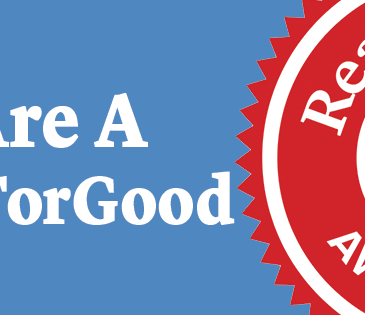
Real 100 Leaders: Recognizing The Country’s Most Impactful Brands for 2019
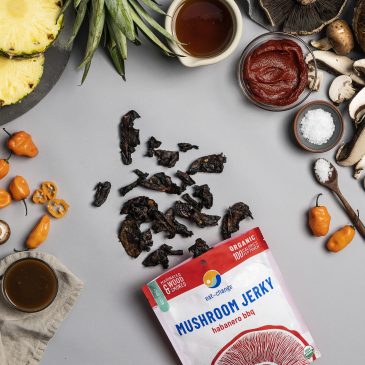
Purpose At Work: How Eat The Change Is Cultivating A Sustainable Food Movement
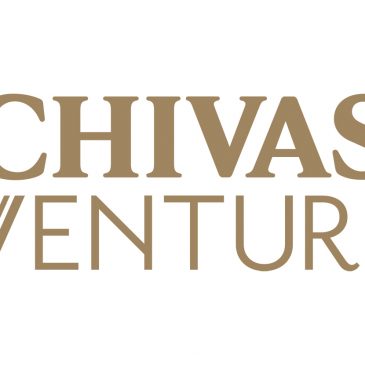
Purpose At Work: How Chivas Regal Blends Profit and Purpose

